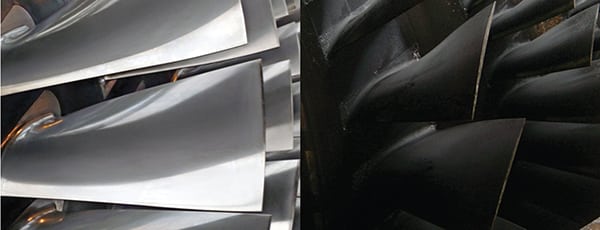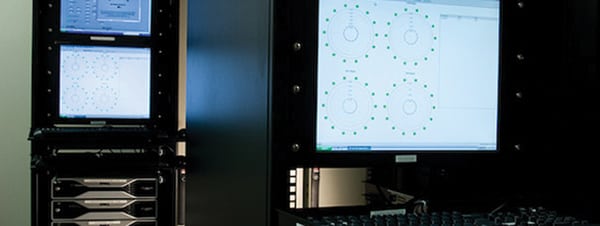With low gas prices and renewable generation boosting demand and capacity factors for combined cycle plants, plant operators are being called upon to squeeze out every last megawatt from their systems. Fortunately, there have never been more ways to do it. Here are some you may not have thought of.
Gas-fired power is booming—even more than expected. For only the second time ever, but also the second time this year, gas generated more electricity in a month in the U.S. than coal. According to statistics from the Energy Information Administration (EIA), in July 2015 coal generated 139 TWh, while natural gas generated 140 TWh. Those statistics are a stark break from 2014, when coal produced 150 TWh and gas was responsible for only 114 TWh.
While coal remained in the lead with a 34.5%-to-31.1% advantage in the power mix through July, those numbers represent a fairly substantial departure from EIA predictions. In its Annual Energy Outlook this year, the EIA predicted gas would reach a 31% share—in 2040.
With gas-fired plants being called upon to shoulder an ever-growing share of the power mix, plant owners are looking for more and better ways to squeeze extra performance out of their equipment, without breaking the bank.
While gas turbine manufacturers such as GE, Siemens, and Mitsubishi-Hitachi Power Systems offer a selection of upgrade packages to improve performance, these kinds of choices are both expensive and require significant down time. For plants that are not in the position to undertake costly outages and upgrades, and those newer plants already operating state-of-the-art equipment, there are still some ways to tweak out a few extra kilowatts.
Clean-Up Time
Jeff Fassett of IEM Energy Consultants, who spoke to POWER in October, recommended that plant operators think first about cleanliness.
Fassett pointed out that a substantial portion of a turbine’s energy is used by the compressor, which means dirty compressor blades can have a serious effect on efficiency. “When the blades are dirty, the airflow is more turbulent, and that will degrade performance.”
Of course, the importance of maintaining inlet filters and keeping intake air clean isn’t a novel idea. Poor-quality inlet air can also lead to blade erosion and corrosion of turbine components, both of which will hurt efficiency. One problem is that the effects of poor-quality air are cumulative: Though cleaning can address blade fouling to some extent, restoring original turbine performance is typically not possible—and erosion can only be addressed by replacement. Thus, it behooves turbine operators to keep air quality as high as possible from initial startup.
But Fassett said the solution he recommends isn’t one operators often take: Swapping out standard ASHRAE filters for HEPA-rated filters.
“The common approach is just changing the filters more often,” he said, “but this doesn’t get to the root problem,” which is that lower-rated filters allow more particulate matter into the turbine and that everything getting into the compressor that doesn’t belong there degrades both short-term and long-term performance.
Fassett has worked with plant managers to upgrade their turbine filters, which usually involves a retrofit, depending on the configuration of the filter house.
A number of companies currently market gas turbine HEPA filters. Louisville, Ky.–based AAF, which has supplied HEPA filters for more than 50 F-class turbines worldwide, estimates that using these filters can recover 6% of the power output normally lost to engine fouling. With HEPA filters, time between turbine cleaning cycles can be at least 8,000 hours (Figure 1). Though the use of HEPA filters results in a larger pressure differential, the initial power loss is more than compensated for by substantially increased cleanliness and reduced downtime.
Bill Lovejoy, chief engineer for engineering services firm NAES, concurred on the importance of maintaining cleanliness, not just because of impact on the turbine blades but also because of the effects dirty filters will have on performance.
“It can catch up to you over time, and you are really hurting yourself. You pay for that pressure drop in your overall efficiency.”
Operational Adjustments
Another performance element Fassett recommends that operators think about is the low-load setpoints on their gas turbines—not just because of effects on the gas turbine but also the downstream effects on the steam turbine.
“When the steam turbine is operating at low loads, you can exhaust the thermal energy before the steam reaches the final stages and get condensation. That can cause erosion of the turbine blades.”
Fassett said low-load setpoints for the gas turbines need to consider effects not just on the turbines themselves but also on the rest of the plant.
Other efficiency losses can be found and eliminated by thinking about ways energy may be escaping the system.
“One site we worked with has an auxiliary boiler and is using it to keep vacuum on the steam turbine generator,” Fassett said. “All excess steam is being piped to the heat-recovery steam generator (HRSG) to keep the boilers warm, so hot restarts are minimized.” Another relatively simple tweak is installing heat blankets to insulate the steam turbine, which cuts down on cold restarts, he said.
Aftermarket Add-Ons
In addition to relatively simple tweaks, there are more sophisticated aftermarket tuning solutions that can be added to existing plants.
EthosEnergy has marketed its ECOMAX automated combustion tuning system for several years. ECOMAX is designed to address performance instabilities that can result from manual tuning to maintain emissions compliance, particularly for NOx. Operating with lean premixed flames in the combustor keeps NOx low but can cause instability in combustion dynamics, which can damage turbine components over time. These instabilities are exacerbated by large ambient temperature swings—common in many areas where gas is a major element of the power mix, such as the U.S. Southwest and West Coast—as well as by fuel quality and instrument drift. When the operating envelope strays outside the optimized range, performance will suffer and emissions can fall out of compliance.
Using real-time monitoring of combustion and emissions, the ECOMAX system automatically tunes combustion to keep the turbine within the optimized operational envelope (Figure 2). ECOMAX can communicate directly with the turbine or integrate with the plant’s digital control system.
ECOMAX can also be used to boost performance, as necessary, with the addition of the Tru-Curve option, which raises the baseload fuel-air ratio while still controlling emissions and combustion dynamics. Tru-Curve can be turned on and off as desired.
EthosEnergy says the ECOMAX Tru-Curve package can improve heat rate by 0.20% to 0.25% and boost power output by up to 11 MW, depending on the size of the plant.
Another, more outside-the-box upgrade is the Turbophase compressed air peaking power system. Offered by Jupiter, Fla.–based Powerphase, the Turbophase unit uses a separate reciprocating engine to add additional compression to the turbine air inlet, without the use of steam or water injection, which can cause operational issues. Powerphase says this system allows faster peaking response than existing options, allowing 10% to 20% additional peaking power capability and up to 7% heat rate improvement, depending on the model of turbine. (For more on Turbophase, see “Quickly Boost Your Combustion Turbine Response” in the October 2014 issue, online at powermag.com.)
Low-Load Combined Cycle Operation
Combined cycle plants often do not operate in combined cycle mode at low loads because the system is optimized for baseload operation, and improper optimization can result in damage to the heat recovery steam generator, as well as emissions violations. However, giving up the ability to operate at low loads can mean lost revenue.
Many of the newest models of combined cycle plants are designed for load following and low-load operation, but with the right approach, some older plants can optimize their operations for low-load generation as well. The Electric Power Research Institute (EPRI) recently conducted a proprietary study determining the best ways to optimize combined cycle operation at a plant using GE 7FA turbines. Though proper optimization procedures will vary from plant to plant and depend on operational profiles, the EPRI study found that a tradeoff between lower exhaust gas temperature and higher exhaust flow would allow lower-load operation without damage to the HRSG and without causing NOx emissions to spike.
Making it work requires careful monitoring of NOx and CO emission levels, combustion dynamics, attemperator performance, main steam-line superheater level, and inlet-guide vane position, in order to determine the minimum generation load at the lowest possible turbi0ne-exhaust temperature.
Though there are trade-offs with nearly any performance enhancement, plant operators have more options these days than ever.
— Thomas W. Overton, JD is a POWER associate editor.
https://www.powermag.com/options-optimizing-combined-cycle-plants/

